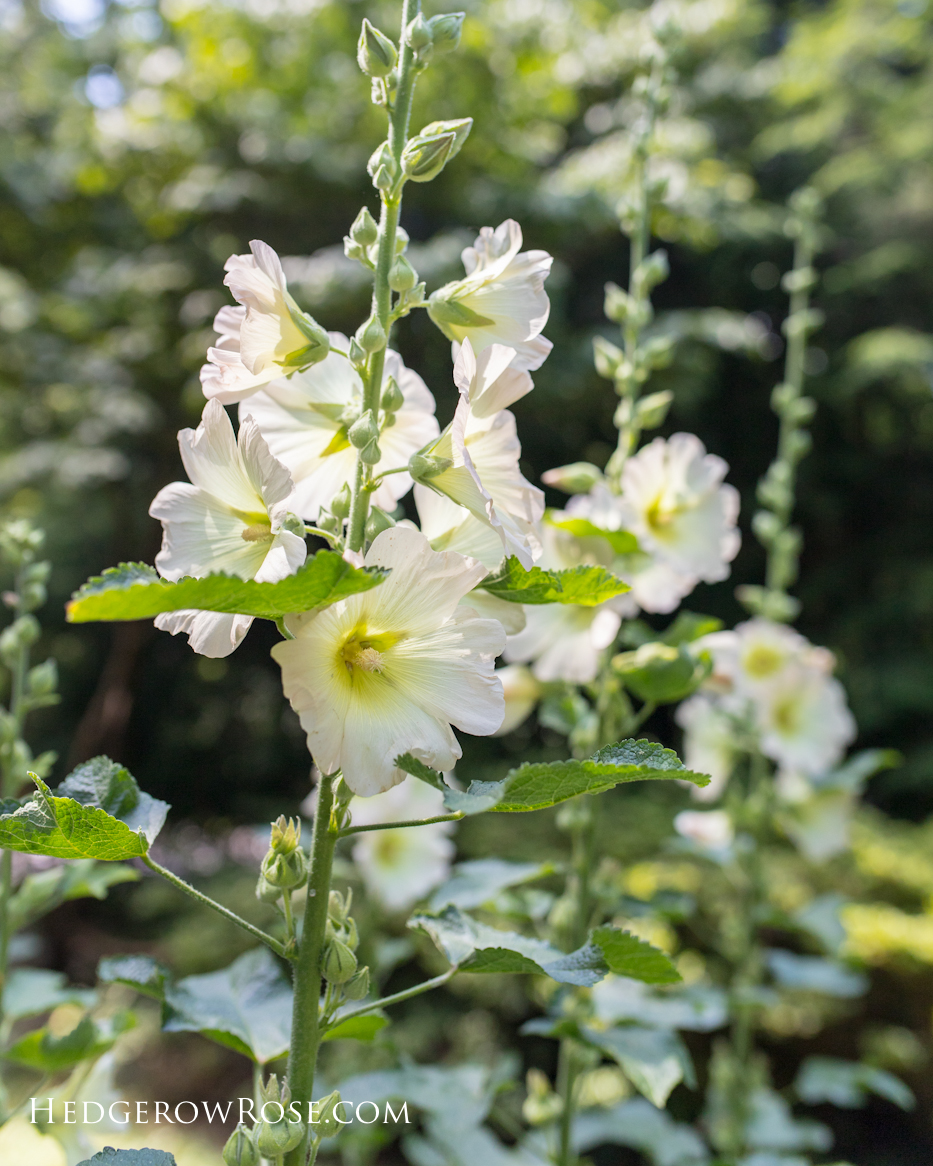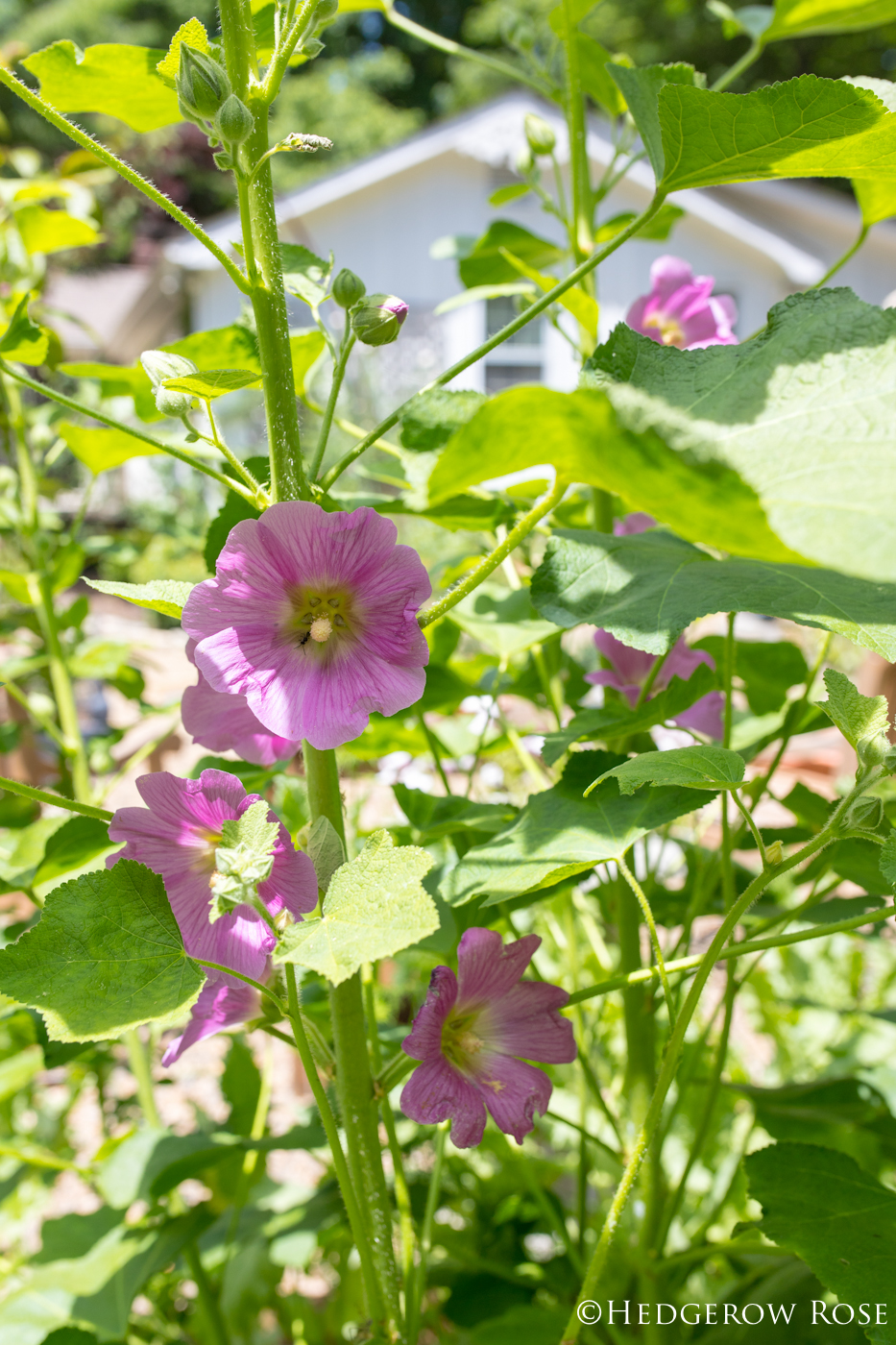My Fig Leaf Hollyhock Experiment

Now that January’s Celebration of Roses is at an end I thought I’d switch gears from roses and talk about a few of the other things going on in last year’s garden. For example, I’d like to share the results of my fig-leaf hollyhock experiment to see if they were more resistant to rust–something that has plagued my hollyhocks in the past.

These seeds, which I sowed in 2017, were from Jelitto and they were supposed to look like these Alcea ficifolia ‘Las Vegas’ mix that Bluestone Perennials sells: rich colors with distinctively fig-like leaves. I believe that I was sent incorrect seeds because not all of the plants appeared to be ficifolia, but rosea, and the colors, when they finally flowered in 2018, were not what was described.

This wasn’t too huge of a disappointment because they were still very pretty and bee magnets, not to mention my livelihood didn’t depend on them looking a certain way for market. (It does make me really feel for all you flower farmers out there when you don’t get the colors that you ordered. Oh, the stress!) Plus, I still accomplished what I set out to do, that is, test to see if the fig leaf types, which in these photos are the ones with the white flowers not the pink, were actually more rust resistant.

The verdict? Yes, they are! Very much so. But that doesn’t mean they can’t succumb to rust. Mine were being grown in a less-than-ideal location and I had a few plants that had just started to get the dreaded blotches shortly after they finished flowering. In my experience, hollyhocks like it dry and sunshine-y all day long and that was the complete opposite of what I was able to provide in that forested garden in that wet growing season. (Some of the prettiest hollyhocks I’ve seen were literally growing in cracks in the sidewalks.) Anyways, by that point, we were getting ready to transfer ownership of our home and I wanted to get the garden looking as nice as possible for the new owner so I cleaned them out. I didn’t even bother to save seeds.

I’d like to try again with another batch of Alcea ficifolia, this time from a different seed company, because I find that growing hollyhocks from seed can be very rewarding and such a huge money saver. If you have any recommendations for a supplier, do please share in the comments.

Oh, by the way, around the same time I sowed the hollyhocks I also started some foxglove. I had far less success with those and only managed to get just one, albeit very nice looking plant. Ha!

I was sad Celebration was over, but this is great! 1. Is that bug in the center of the pink hollyhock a good bug or a bad bug? And what is it? I have them too. 2. I love your cold frame! Did you build it? If so, what did you use for glass? It looks milky, and I like that you painted it white inside! 3. Thanks for posting about hollyhocks. I have always loved them since I saw them in my cousin’s village in France, and have NEVER even brought mine to flower (pulled them out before the rust spread to my other plants). So thanks for the tip! (dry and full sun… that’s exactly what my cousin has). I live under a live oak canopy, however, so I probably won’t try them again, even though your post was tempting.
It’s hard to tell in the photo, but I think it’s a type of small bee, perhaps a type of Halictid Bee, so definitely a good bug! 🙂 Coldframe: this was actually built by us and I have a whole post written about it with instructions if you’re interested click HERE. It’s too big for our new garden but we brought it with us anyways. Maybe we can cut it down so it will fit because I do love it!
Yes, hollyhocks seem to really love hot, dry sunshine. France seems to just grow them best…actually they grow a lot of things best! 😉
I love holly hocks, but for me the rose chafers are my bane. I’ve had good luck with Chilterns seeds.
Thank you for the Chiltern Seeds tip! For your rose chafers, have you ever tried using beneficial nematodes in the soil?